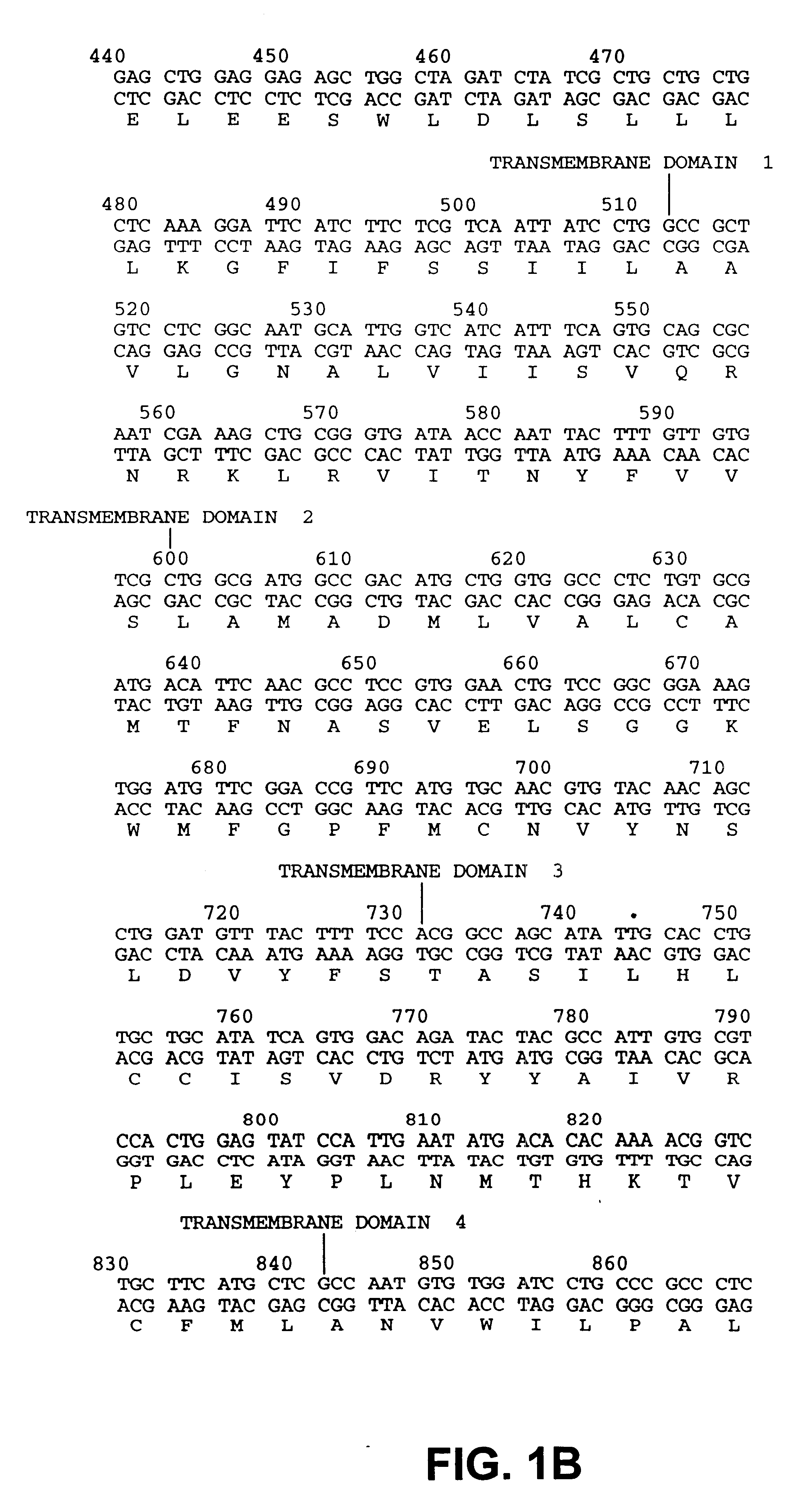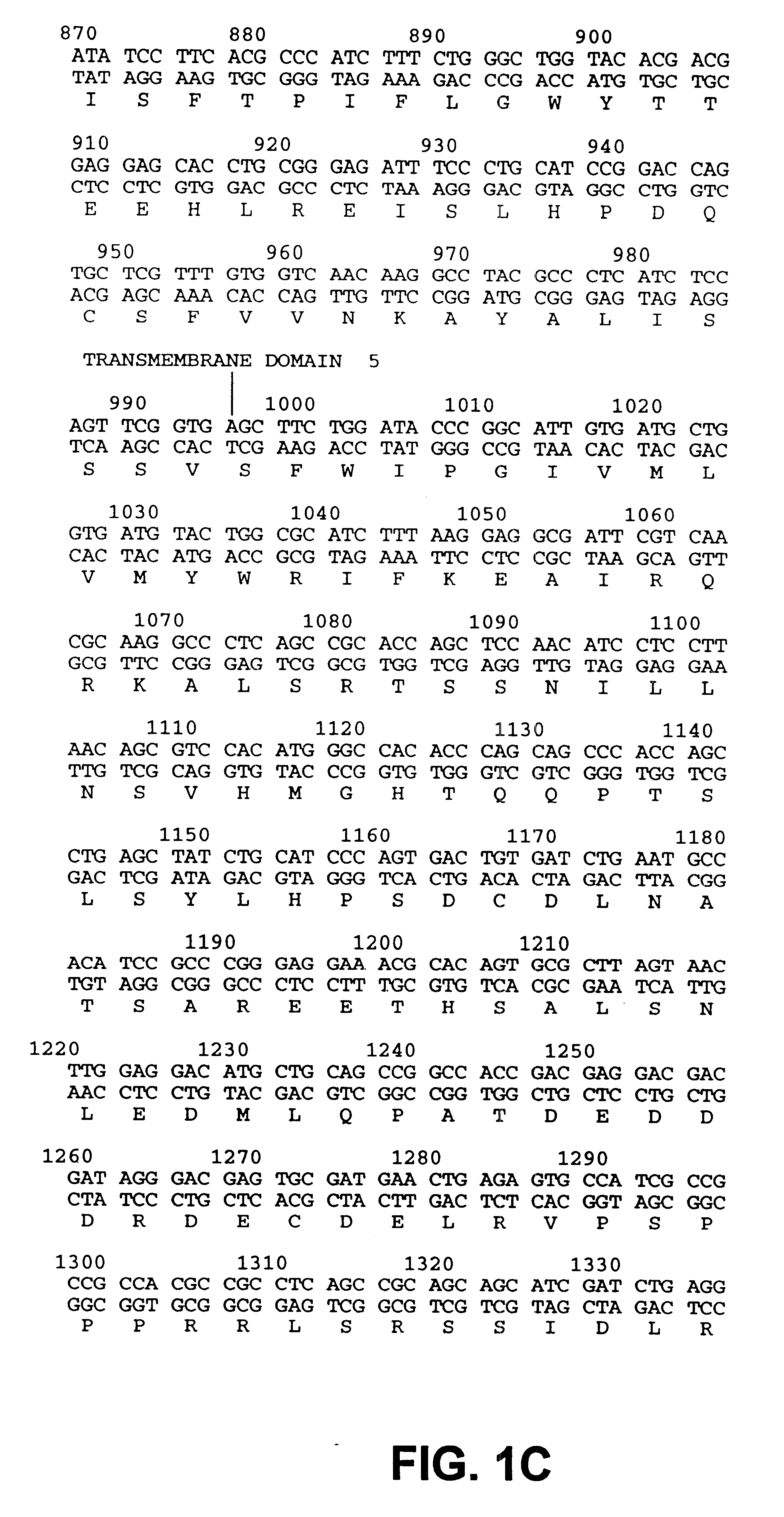Drosophila sequences
- Summary
- Abstract
- Description
- Claims
- Application Information
AI Technical Summary
Benefits of technology
Problems solved by technology
Method used
Image
Examples
second embodiment
In a second embodiment, loss-of-Function phenotypes are generated by co-suppression methods (Bingham, 1997, Cell 90:385-387; Smyth, 1997, Curr. Biol. 7:793-795; Que and Jorgensen, 1998, Dev. Genet. 22:100-109). Co-suppression is a phenomenon of reduced gene expression produced by expression or injection of a sense strand RNA corresponding to a partial segment of the gene-of-interest. Cosuppression effects have been employed extensively in plants to generate loss-of-Function phenotypes, and there is report of cosuppression in Drosophila where reduced expression of the Adh gene was induced from a white-Adh transgene (Pal-Bhadra et al., 1997, Cell 90:479-490).
third embodiment
In a third embodiment, loss-of-Function phenotypes may be generated by double-stranded RNA interference. This method is based on the interfering properties of double-stranded RNA derived from the coding regions of genes. Termed dsRNAi, this method has proven to be of great utility in genetic studies of the nematode C. elegans (see Fire et al., 1998, Nature 391:806-811) and more recently in Drosophila (see Misquitta et al., 1999, Proc. Natl. Acad. Sci. U.S.A. 96, 1451-1456; and Kennerdell et al., 1998, Cell 95, 1017-1026). In a preferred embodiment of this method, complementary sense and antisense RNAs derived from a substantial portion of a gene-of-interest, such as a GPCR gene, are synthesized in vitro. Phagemid DNA templates containing cDNA clones of the gene-of-interest are inserted between opposing promoters for T3 and T7 phage RNA polymerases. Alternatively, one can use PCR products amplified from coding regions of genes, where the primers used for the PCR reactions are modifie...
PUM
| Property | Measurement | Unit |
|---|---|---|
| Temperature | aaaaa | aaaaa |
| Temperature | aaaaa | aaaaa |
| Temperature | aaaaa | aaaaa |
Abstract
Description
Claims
Application Information
 Login to View More
Login to View More - R&D
- Intellectual Property
- Life Sciences
- Materials
- Tech Scout
- Unparalleled Data Quality
- Higher Quality Content
- 60% Fewer Hallucinations
Browse by: Latest US Patents, China's latest patents, Technical Efficacy Thesaurus, Application Domain, Technology Topic, Popular Technical Reports.
© 2025 PatSnap. All rights reserved.Legal|Privacy policy|Modern Slavery Act Transparency Statement|Sitemap|About US| Contact US: help@patsnap.com



